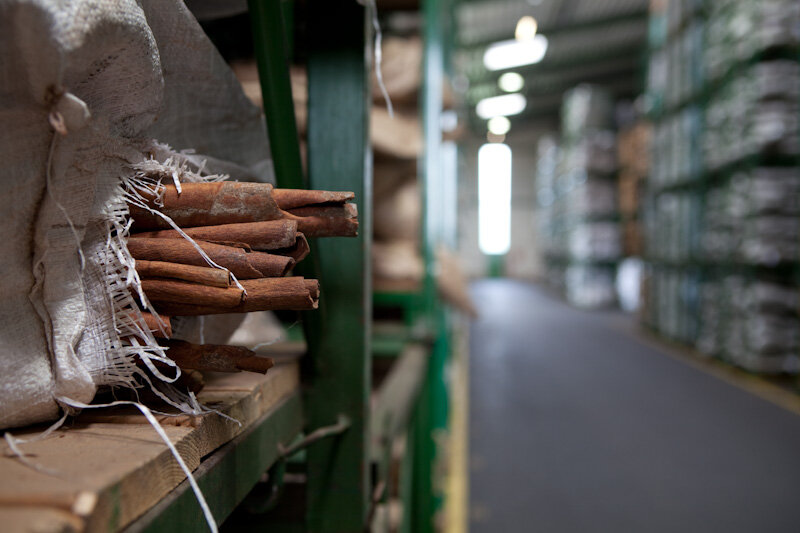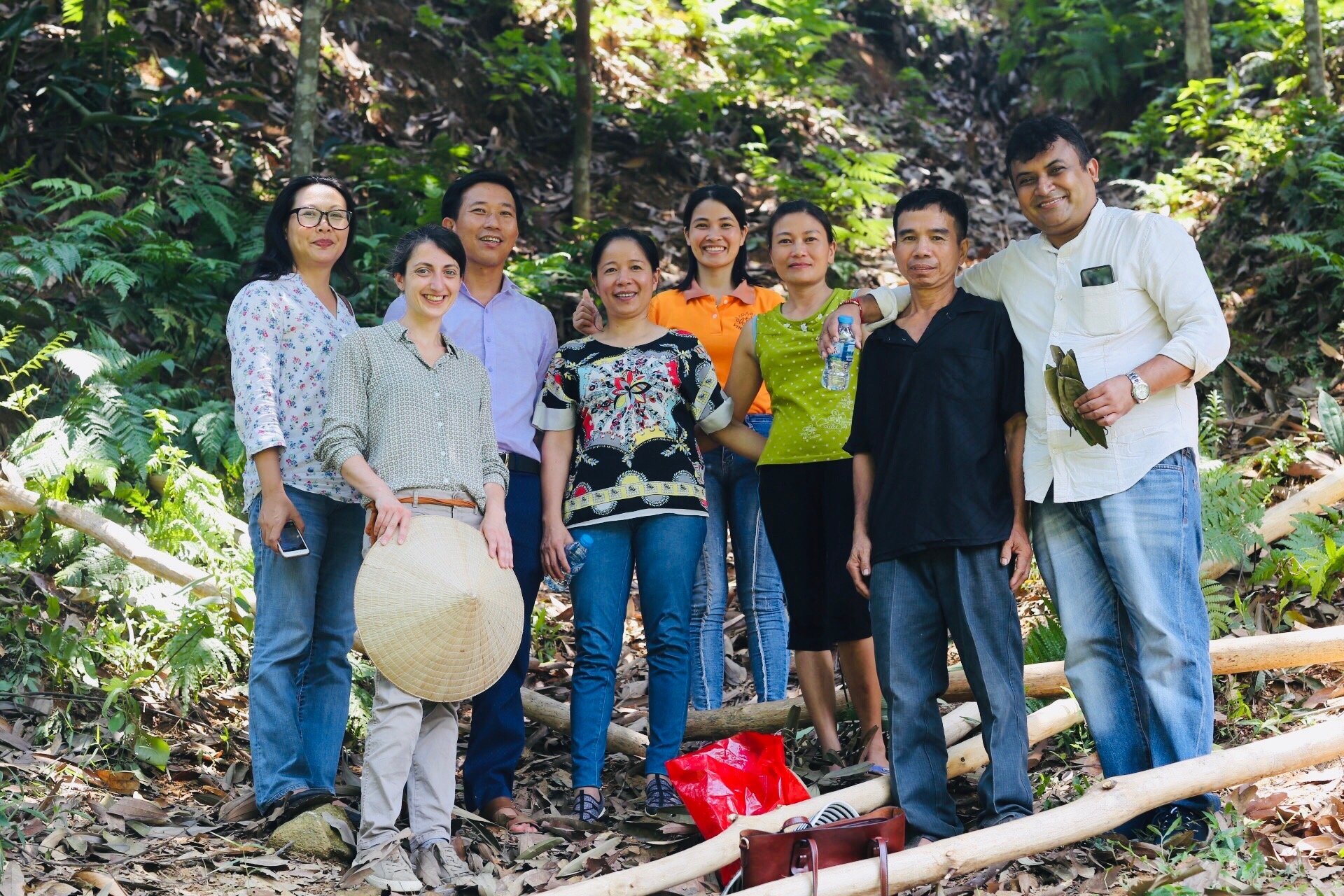Cinnamon
A celebrated ancient spice
© Martin Bauer
Deeply brown in colour with a delicately fragrant aroma and a sweet flavour, cinnamon can be found in everyone's kitchen cabinet to flavour a variety of foods, cakes and beverages. But most of us know little about the history of such a well-known spice.
Cinnamon is the common name for the perennial plant Cinnamomum sp., a member of the Lauraceae family.
There are hundreds of species within the Cinnamomum genus that are native to tropical and subtropical regions. They vary somewhat in appearance, with some growing as tall trees and others growing as small shrubs. The cinnamon tree, which appreciates moist well-drained soils, produces yellowish-green flowers and a small berry fruit.
Cinnamon, drying
The spice is harvested from the peels of the inner bark of the Cinnamomum tree. The trees grow for two to three years before getting their stems cut at the ground level. The following year, about a dozen shoots will form from the roots replacing those that were cut. The cut peels are left out to dry and curl up naturally into quills, also known as cinnamon sticks. The quills can then be ground into powder or processed to make cinnamon oil, cinnamon extract, and other cinnamon products.
Today, cinnamon is mostly used for cooking but also as a botanical remedy.
Ancient nations already knew about the health benefits of cinnamon as it was said to be used in China as early as 3000 BC. Cinnamon is considered to be one of the first traded spices in the ancient world. The spice was considered during this time as valuable as gold and was given as gifts for Monarchs and Gods. Ancient Egyptians used cinnamon as part of their embalming rituals while medieval Europe used it for religious rites, flavouring and to preserve the meat in the winter. When it arrived in the Mediterranean world, its source was kept secret for centuries by middlemen (first Portuguese then Dutch) who managed the spice trade, to protect their monopoly. Cinnamon had lost its place as a rare and expensive spice by 1800 when cultivation in other parts of the world started.
Nowadays, cinnamon is cultivated extensively in China, Indonesia, Sri Lanka, the coastal regions of India and Vietnam. Cinnamomum verum, also known as "true cinnamon" or "Ceylon cinnamon", comes primarily from Sri Lanka. It is said to be more delicately flavoured. But the cinnamon in the everyday kitchen cabinet is most likely to be Cinnamomum cassia, which is native to China and the most common type.
Vietnamese cinnamon—also known as "Vietnamese cassia" or "Saigon cinnamon"—is harvested from the Cinnamomum loureiroi tree. Compared to other species, Vietnamese cinnamon bark has the highest concentration of essential oils, giving it a distinctive flavour that is more pronounced than other varieties. Although it is called Saigon cinnamon, it is not produced in the area around the southern city of Ho Chi Minh City (formerly Saigon), but instead in the Central Highlands regions of the country, particularly the Yen Bai Province. Here, small-scale farmers grow valuable crops such as coffee, tea, cocoa, black pepper, and cinnamon.
UEBT has several company members sourcing this popular spice for the food and beverage sectors. Here are two of them:
© Martin Bauer
Headquartered in Germany, Martin Bauer Group, UEBT member since 2014, procures more than 200 botanicals from more than 80 countries and five continents. Since 2015, Martin Bauer Group has been certified under the UEBT/UTZ Herbal Tea Programme (UEBT/Rainforest Alliance Herbs & Spices Programme from January 2021). In 2019, 121 different natural raw materials were certified under this programme including cinnamon.
Vinasamex, a UEBT member since 2019, is a Vietnamese company processing and selling organic cinnamon and star anise mainly collected from Yen Bai and Long Son provinces to the international market. Vinasamex works closely with the cinnamon growers who are mostly from poor ethnic communities. Collectors are established in cooperatives to whom Vinasamex provides technical training, supplies seeds, organic fertilizers, containing bags and safe harvesting tools.
© UEBT visit to Vinasamex’s cinnamon supply chain
Both Martin Bauer Group and Vinasamex continue to work with UEBT on ethical sourcing of herbs and spices in their respective markets. UEBT is now working in partnership with Rainforest Alliance on an Herbs and Spices Programme that ensures these ingredients are sourced in ways that respect people and biodiversity
Thanks to Martin Bauer and Vinasamex for information provided for this article.
Other sources used:
Improved life in cinnamon growing province of Yen Bai, The voice of Vietnam
Cinnamon: A History As Rich As Its Flavor, Spicegeography




